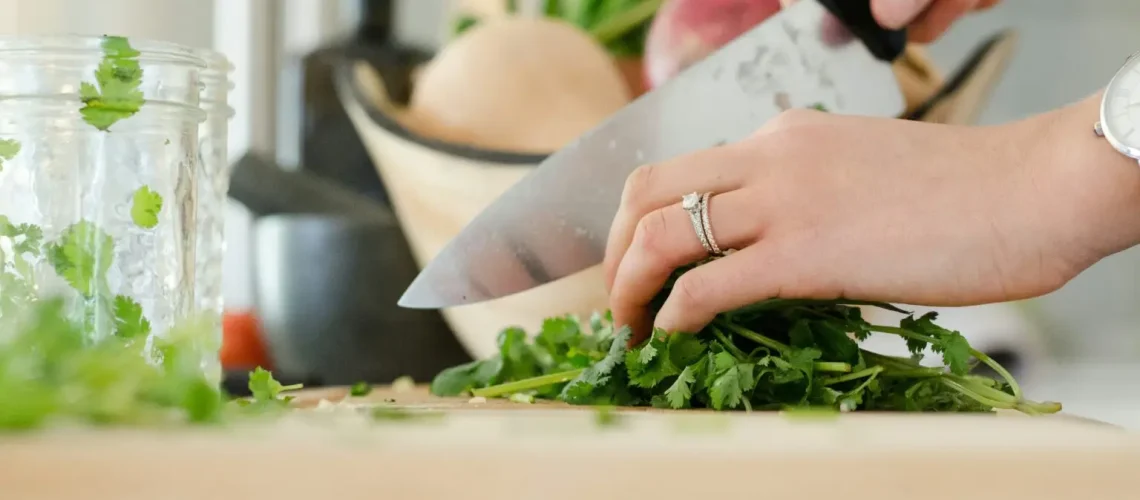The kitchen is the heart of the home, but it’s also one of the most accident-prone areas. From sharp knives to hot stovetops, the kitchen is filled with potential hazards. Here are some essential safety tips to keep your kitchen both safe and functional for everyone in your home.
1. Fire Safety: Preventing Kitchen Fires
Keep a Fire Extinguisher Handy
Every kitchen should have a fire extinguisher within easy reach. Make sure it’s the right type for kitchen fires (usually a Class K extinguisher) and that everyone in the household knows how to use it.
Don’t Leave Cooking Unattended
Unattended cooking is a leading cause of kitchen fires. Whether you’re frying, grilling, or baking, stay nearby and keep an eye on your cooking to prevent accidents.
Be Cautious with Grease and Oil
Grease fires can quickly get out of control. Never leave oil heating on the stovetop unattended, and avoid putting out a grease fire with water. Instead, turn off the heat and smother the flames with a metal lid or a fire extinguisher if it’s safe to do so.
2. Knife Safety: Handling with Care
Use Proper Cutting Techniques
Always cut away from your body and use a stable, non-slip cutting board. Dull knives are more dangerous than sharp ones, so keep your knives well-maintained to reduce the risk of slipping and cutting yourself.
Store Knives Safely
Use a knife block or magnetic strip to store knives securely, and keep them out of reach of children. Avoid placing knives in a crowded drawer where they can cause accidental cuts when reaching in.
3. Electrical Safety: Managing Kitchen Appliances
Inspect Cords and Outlets
Regularly check appliance cords for fraying or damage. Plug appliances directly into outlets rather than using extension cords to reduce the risk of electrical overload.
Keep Water Away from Electrical Appliances
Water and electricity are a dangerous combination. Keep small appliances like toasters, blenders, and coffee makers away from sinks, and never handle them with wet hands.
Unplug Appliances When Not in Use
This is especially important for devices that generate heat, such as toasters or coffee makers, which could start a fire if they malfunction.
4. Chemical Safety: Handling Cleaning Products
Store Chemicals Safely
Keep cleaning supplies and other chemicals stored securely and out of reach of children. Consider using childproof locks for cabinets and label all bottles clearly.
Avoid Mixing Chemicals
Mixing household cleaners, especially bleach and ammonia, can create toxic fumes. Stick to one product at a time and follow the manufacturer’s instructions to avoid accidental exposure to harmful substances.
5. Burn Prevention: Protecting Yourself from Heat
Use Oven Mitts and Pot Holders
Avoid handling hot pots and pans with towels or clothing, which can catch fire. Use proper oven mitts and pot holders to prevent burns when handling hot items.
Turn Pot Handles Inward
To avoid accidental spills, always turn pot and pan handles inward on the stovetop, especially if there are children around who might grab them or bump into them.
Lift Lids Carefully
When checking on a pot or pan, lift the lid away from your face to avoid being scalded by hot steam.
6. Preventing Slips and Falls
Clean Up Spills Immediately
Kitchens are high-traffic areas, so promptly clean up any spills to prevent slips and falls.
Use Non-Slip Mats
Place non-slip mats near the sink and stove to reduce the risk of slipping on wet floors. Ensure that any rugs or mats are properly secured to avoid tripping.
7. Safe Food Handling: Avoiding Foodborne Illnesses
Keep Work Surfaces Clean
Regularly sanitize countertops, especially after handling raw meat, fish, or poultry. Use separate cutting boards for raw and cooked foods to avoid cross-contamination.
Store Foods at the Right Temperature
Keep perishable foods in the refrigerator and store raw meats on the bottom shelf to prevent drips that could contaminate other foods. Make sure your refrigerator is set to a safe temperature, ideally below 40°F (4°C).
Check Expiration Dates
Avoid using ingredients past their expiration dates, as spoiled food can cause foodborne illness. Regularly go through your pantry and refrigerator to keep track of items nearing their expiration.
Conclusion
Implementing these kitchen safety measures can help create a safer environment and reduce the risk of accidents and injuries. Simple habits like turning pot handles inward, storing cleaning chemicals properly, and unplugging appliances can make a big difference in keeping your kitchen a safe place for everyone. By following these tips, you can enjoy your time in the kitchen with greater peace of mind, knowing you’ve taken steps to protect your family and your home.

